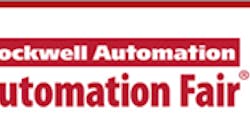Along with managing basic material and formulation issues, pharmaceutical manufacturers must also maintain precise temperature and humidity levels. These are required by their validation rules and documented and inspected by U.S. and other national governments from countries where their products are sold.
These temperature, humidity and associated parameters are typically managed by environmental management systems (EMS) and building management systems (BMS), but these stalwart systems can wear out over time.
For instance, the GlaxoSmithKline (GSK) plant in Zebulon, N.C., was built in 1984, and it makes 30 brands and 500 products in temperature- and humidity-controlled environments to ensure product integrity.
However, the 30-year-old plant had a 20-year-old EMS and an aging BMS, so GSK engineers recently began seeking an effective upgrade solution that they could also bring online without negatively impacting required production or regulatory compliance.
"The old EMS was basically obsolete, and we couldn't even find people to work on it anymore. We were also risking big downtime to our production, and potentially having to restart multiple power systems," says Jeffrey Leverton, automation engineering manager, GSK. "Our infrastructure is critical to our manufacturing, but we also had multiple disparate systems, so we wanted to integrate them into one system."
Leverton, Omar Bahader, senior application engineer at GSK, and Daniel Homan, engineering manager for industrial HVAC and central utility plants systems at Rockwell Automation, presented "Converting a Legacy BMS to a PlantPAx System" on the opening day of Rockwell Automation Process Solutions User Group (PSUG), November 16 at McCormick Place in Chicago. PSUG is held before the opening of the Automation Fair event.
"These solutions increase operators' visibility into their processes, and provide more thorough information from the BMS and EMS for better decision-making." Jeffrey Leverton, automation engineering manager, GlaxoSmithKline.
Besides upgrading its EMS/BMS without hindering production, Leverton explained that GSK also wanted to enhance its operational data; optimize production for leaner manufacturing; merge the formerly separate EMS/BMS sides; increase its energy savings; increase data visibility and access for operators; and automate its restart process.
To those ends, the Zebulon plant implemented a validated version of the PlantPAx DCS from Rockwell Automation, as well as the Library for Life Sciences as their industrial Building Automation System.
Much of these systems are running on virtualized machines and are connected via EtherNet/IP networking to thin-client interfaces using ThinManager software.
The solutions were installed of 105 different equipment systems at the plant, including air handlers, chillers, boilers and other components. This equipment was controlled by 15 different process control units (PCUs) and include 1,756 I/O points.
"These solutions increase operators' visibility into their processes, and provide more thorough information from the BMS and EMS for better decision-making," said Leverton. "We've also achieved automated restarts, as well as better interfacing with third-party controllers."
Homan added the Zebulon plant cutover its first system—its main energy management system with air-handlers and chillers—in just about seven days, even though it had to examine and revise wiring for several devices that were showing normally open when they were supposed to be normally closed.
"We had dry runs, and powered down to make sure everything could run on the PCUs without difficulties," said Homan. "The second cutover wasn't as smooth because we couldn't put some devices under one loop controller, and we lost hours until we established control with a mA signal. Also, a soft starter on a condenser water pump became defective, so we had to get a variable frequency drive (VFD) from our distributor, Electronic Supply Equipment (ESE) in Greensboro, N.C., on the Sunday before Labor Day, and they met us at their warehouse."
Despite these hurdles, the Zebulon plant has successfully completed two cutovers and upgrades to PlantPAx Systems, and is already working on several more that it will perform in the coming year. Along with supplying PlantPAx Systems, and hardware, Rockwell Automation has been running three teams of support personnel at the plant, where they and GSK have built temporary test stands and conducted software factory acceptance tests (SFATs) for all the new systems and solutions before installation.
"We were able to cut the IFM cables to proper lengths to the terminal blocks installed on our back panels to the old Bailey boards, then pre-number them with the same numbers used by the existing wires, so they all matched," added Leverton. "This gave us about 35% worth of spare I/O, and allows us to keep the old Bailey devices running for now, until we cut them over later as well."








